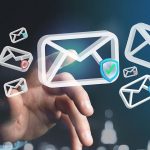[Ask Me Anything Wrap-Up]
On September 16, 2020, GreatHorn’s CEO, Kevin O’Brien, moderated an informative Ask Me Anything session with John P. Keenan, the Director of Information Security at the Memorial Hospital at Gulfport.
John P. Keenan is a battle-tested, business-focused healthcare CISO, who manages efforts across security architecture, vulnerability management, security awareness, network, cloud and endpoint protection within a 5000+ public healthcare organization.
This session was conducted as a live virtual event where we took questions from our viewers around the topic of balancing email security and end user productivity. Here is a wrap-up of some of the main thoughts discussed and questions answered in this session.
How the media talks about this unprecedented time and an increase in cybercrime
Keenan noted the increase in cyber-crime was not just attributed to the pandemic or the digital revolution. One of the main reasons behind this increase is due to off-the-shelf phishing packages that are so widely available anyone can purchase and execute one, which makes an attacker’s job far too easy.
The types of phishing attacks that are most concerning
The most difficult kind of phishing attack to thwart is one where end users are contacted by attackers sporting a Business Service impersonation, such as Google Drive. Keenan said his organization has over 5000 employees, and all of them can report to his team to help remediate any kind of phishing activity.
As a result, Keenan believes end users are not necessarily the weak links of an organization, and instead each one can be instrumental in protecting the organization through proper education. As an example, the Cybersecurity Awareness Program at Memorial Hospital at Gulfport is a one-hour training session that was proving to be ineffective in the long term. Keenan added risk-based scorecards to enroll users in periodic training to make the overall security program, and their users, more effective at detecting and reporting phish.
How phishing attacks are being remediated and workplaces and data secured
Keenan noted that about 3 years ago, his organization took between 1 and 4 days to remediate a phishing attack. Since implementing GreatHorn last year, their cybersecurity landscape has changed dramatically, and remediation time has gone from several days to a matter of hours. GreatHorn’s tools, coupled with consistent security training, Keenan noted has reduced the success of spear phishing campaigns.
Metrics and reports to keep organizations secure
Keeping organizations secure revolves around having a risk-based reporting approach in place over a volume-based reporting strategy. Keenan and his team would quantify costs associated with downtime, breaches and resources deployed for remediation. Then they would attribute what they came up with to the various risks. This helped to prioritize the mitigation of attacks with a cost associated to the solution.
This discussion was valuable and informative. Keenan signed off with the following parting thoughts for viewers:
- Email is a tactical battle and long-range campaign.
- Communication is key – teams must find ways to communicate with peers and those outside of information systems.
For a more comprehensive look at how to balance security and productivity in your organization’s email environment, check out the full interview here.





